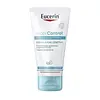What's inside
What's inside
 Key Ingredients
Key Ingredients

 Benefits
Benefits

 Concerns
Concerns

 Ingredients Side-by-side
Ingredients Side-by-side

Water
Skin ConditioningButylene Glycol
HumectantGlycerin
HumectantDiisostearyl Malate
EmollientDicaprylyl Ether
EmollientHydrogenated Poly(C6-14 Olefin)
EmollientBetaine
HumectantCetyl Ethylhexanoate
EmollientMethyl Trimethicone
Skin ConditioningC14-22 Alcohols
Emulsion StabilisingCetearyl Alcohol
EmollientGlyceryl Stearate Citrate
Emollient1,2-Hexanediol
Skin ConditioningStearic Acid
CleansingPolymethyl Methacrylate
Panthenol
Skin ConditioningHydroxyethyl Acrylate/Sodium Acryloyldimethyl Taurate Copolymer
Emulsion StabilisingAmmonium Acryloyldimethyltaurate/Vp Copolymer
Glyceryl Stearate
EmollientPalmitic Acid
EmollientArachidyl Alcohol
EmollientC12-20 Alkyl Glucoside
EmulsifyingAcetyl Glucosamine
Skin ConditioningBehenyl Alcohol
EmollientArachidyl Glucoside
EmulsifyingEthylhexylglycerin
Skin ConditioningCeramide NP
Skin ConditioningDisodium EDTA
Hydrogenated Lecithin
EmulsifyingSorbitan Isostearate
EmulsifyingDipropylene Glycol
HumectantThymol Trimethoxycinnamate
AntioxidantGluconolactone
Skin ConditioningGlucose
HumectantTocopherol
AntioxidantOenothera Biennis Oil
EmollientHydroxypropyl Bispalmitamide Mea
EmollientMannitol
HumectantCopernicia Cerifera Wax Extract
Acrylates/Ammonium Methacrylate Copolymer
Silica
AbrasiveArachidic Acid
CleansingCaesalpinia Sappan Stem Powder
ExfoliatingCholesterol
EmollientOleic Acid
EmollientWater, Butylene Glycol, Glycerin, Diisostearyl Malate, Dicaprylyl Ether, Hydrogenated Poly(C6-14 Olefin), Betaine, Cetyl Ethylhexanoate, Methyl Trimethicone, C14-22 Alcohols, Cetearyl Alcohol, Glyceryl Stearate Citrate, 1,2-Hexanediol, Stearic Acid, Polymethyl Methacrylate, Panthenol, Hydroxyethyl Acrylate/Sodium Acryloyldimethyl Taurate Copolymer, Ammonium Acryloyldimethyltaurate/Vp Copolymer, Glyceryl Stearate, Palmitic Acid, Arachidyl Alcohol, C12-20 Alkyl Glucoside, Acetyl Glucosamine, Behenyl Alcohol, Arachidyl Glucoside, Ethylhexylglycerin, Ceramide NP, Disodium EDTA, Hydrogenated Lecithin, Sorbitan Isostearate, Dipropylene Glycol, Thymol Trimethoxycinnamate, Gluconolactone, Glucose, Tocopherol, Oenothera Biennis Oil, Hydroxypropyl Bispalmitamide Mea, Mannitol, Copernicia Cerifera Wax Extract, Acrylates/Ammonium Methacrylate Copolymer, Silica, Arachidic Acid, Caesalpinia Sappan Stem Powder, Cholesterol, Oleic Acid
Water
Skin ConditioningGlycerin
HumectantOctyldodecanol
EmollientCetyl Alcohol
EmollientGlyceryl Stearate
EmollientCaprylic/Capric Triglyceride
MaskingMethylpropanediol
SolventStearyl Alcohol
EmollientHydrogenated Coco-Glycerides
EmollientButyrospermum Parkii Butter
Skin ConditioningGlyceryl Stearate Se
EmulsifyingCetyl Palmitate
EmollientColloidal Oatmeal
AbsorbentGlycyrrhiza Inflata Root Extract
Skin ConditioningCeramide NP
Skin ConditioningPhytosphingosine
Skin ConditioningMenthoxypropanediol
MaskingGlycine
BufferingSodium PCA
HumectantDecylene Glycol
Skin ConditioningCitric Acid
BufferingSodium Citrate
BufferingSodium Cetearyl Sulfate
CleansingCaprylyl Glycol
EmollientOleic Acid
EmollientEthylhexylglycerin
Skin ConditioningPhenoxyethanol
PreservativeBenzyl Alcohol
PerfumingWater, Glycerin, Octyldodecanol, Cetyl Alcohol, Glyceryl Stearate, Caprylic/Capric Triglyceride, Methylpropanediol, Stearyl Alcohol, Hydrogenated Coco-Glycerides, Butyrospermum Parkii Butter, Glyceryl Stearate Se, Cetyl Palmitate, Colloidal Oatmeal, Glycyrrhiza Inflata Root Extract, Ceramide NP, Phytosphingosine, Menthoxypropanediol, Glycine, Sodium PCA, Decylene Glycol, Citric Acid, Sodium Citrate, Sodium Cetearyl Sulfate, Caprylyl Glycol, Oleic Acid, Ethylhexylglycerin, Phenoxyethanol, Benzyl Alcohol
Ingredients Explained
These ingredients are found in both products.
Ingredients higher up in an ingredient list are typically present in a larger amount.
Ceramide NP is a type of ceramide.
Ceramides are intercellular lipids naturally found in our skin that bonds dead skin cells together to create a barrier. They are known for their ability to hold water and thus are a great ingredient for dry skin.
Ceramides are an important building block for our skin barrier. A stronger barrier helps the skin look more firm and hydrated. By bolstering the skin ceramides act as a barrier against irritating ingredients. This can help with inflammation as well.
If you would like to eat ceramides, sweet potatoes contain a small amount.
Read more about other common types of ceramides here:
Ceramide AP
Ceramide EOP
Ethylhexylglycerin (we can't pronounce this either) is commonly used as a preservative and skin softener. It is derived from glyceryl.
You might see Ethylhexylglycerin often paired with other preservatives such as phenoxyethanol. Ethylhexylglycerin has been found to increase the effectiveness of these other preservatives.
Glycerin is already naturally found in your skin. It helps moisturize and protect your skin.
A study from 2016 found glycerin to be more effective as a humectant than AHAs and hyaluronic acid.
As a humectant, it helps the skin stay hydrated by pulling moisture to your skin. The low molecular weight of glycerin allows it to pull moisture into the deeper layers of your skin.
Hydrated skin improves your skin barrier; Your skin barrier helps protect against irritants and bacteria.
Glycerin has also been found to have antimicrobial and antiviral properties. Due to these properties, glycerin is often used in wound and burn treatments.
In cosmetics, glycerin is usually derived from plants such as soybean or palm. However, it can also be sourced from animals, such as tallow or animal fat.
This ingredient is organic, colorless, odorless, and non-toxic.
Glycerin is the name for this ingredient in American English. British English uses Glycerol/Glycerine.
Learn more about GlycerinGlyceryl Stearate is a mix of glycerin and stearic acid.
It is used to stabilize the mixing of water and oil ingredients. By preventing these ingredients from separating, it can help elongate shelf life. It can also help thicken the product's texture.
As an emollient, it helps soften skin and supports barrier-replenishing ingredients.
In cosmetics, Glyceryl Stearate is often made from vegetable oils or synthetically produced.
This ingredient may not be fungal-acne safe
Fun fact: The human body also creates Glyceryl Stearate naturally.
Learn more about Glyceryl StearateOleic Acid is an Omega-9 fatty acid. It can be found in many plant oils such as avocado and marula oils.
This ingredient is used to enhance the texture of products and as a cleansing agent.
Oleic Acid may not be fungal acne safe.
Learn more about Oleic AcidWater. It's the most common cosmetic ingredient of all. You'll usually see it at the top of ingredient lists, meaning that it makes up the largest part of the product.
So why is it so popular? Water most often acts as a solvent - this means that it helps dissolve other ingredients into the formulation.
You'll also recognize water as that liquid we all need to stay alive. If you see this, drink a glass of water. Stay hydrated!
Learn more about Water